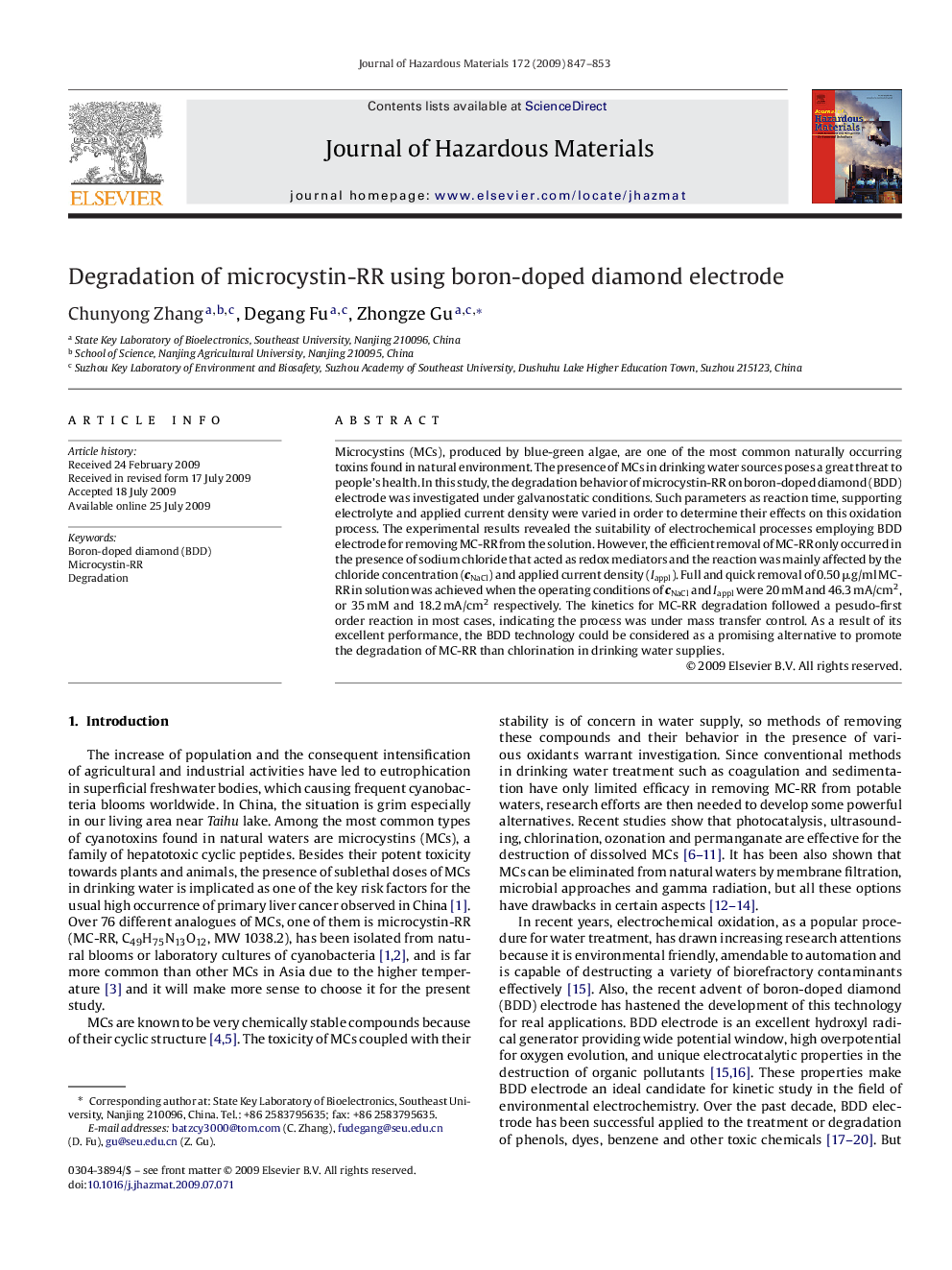| Article ID | Journal | Published Year | Pages | File Type |
|---|---|---|---|---|
| 580770 | Journal of Hazardous Materials | 2009 | 7 Pages |
Abstract
Microcystins (MCs), produced by blue-green algae, are one of the most common naturally occurring toxins found in natural environment. The presence of MCs in drinking water sources poses a great threat to people's health. In this study, the degradation behavior of microcystin-RR on boron-doped diamond (BDD) electrode was investigated under galvanostatic conditions. Such parameters as reaction time, supporting electrolyte and applied current density were varied in order to determine their effects on this oxidation process. The experimental results revealed the suitability of electrochemical processes employing BDD electrode for removing MC-RR from the solution. However, the efficient removal of MC-RR only occurred in the presence of sodium chloride that acted as redox mediators and the reaction was mainly affected by the chloride concentration (cNaCl) and applied current density (Iappl). Full and quick removal of 0.50 μg/ml MC-RR in solution was achieved when the operating conditions of cNaCl and Iappl were 20 mM and 46.3 mA/cm2, or 35 mM and 18.2 mA/cm2 respectively. The kinetics for MC-RR degradation followed a pesudo-first order reaction in most cases, indicating the process was under mass transfer control. As a result of its excellent performance, the BDD technology could be considered as a promising alternative to promote the degradation of MC-RR than chlorination in drinking water supplies.
Related Topics
Physical Sciences and Engineering
Chemical Engineering
Chemical Health and Safety
Authors
Chunyong Zhang, Degang Fu, Zhongze Gu,
